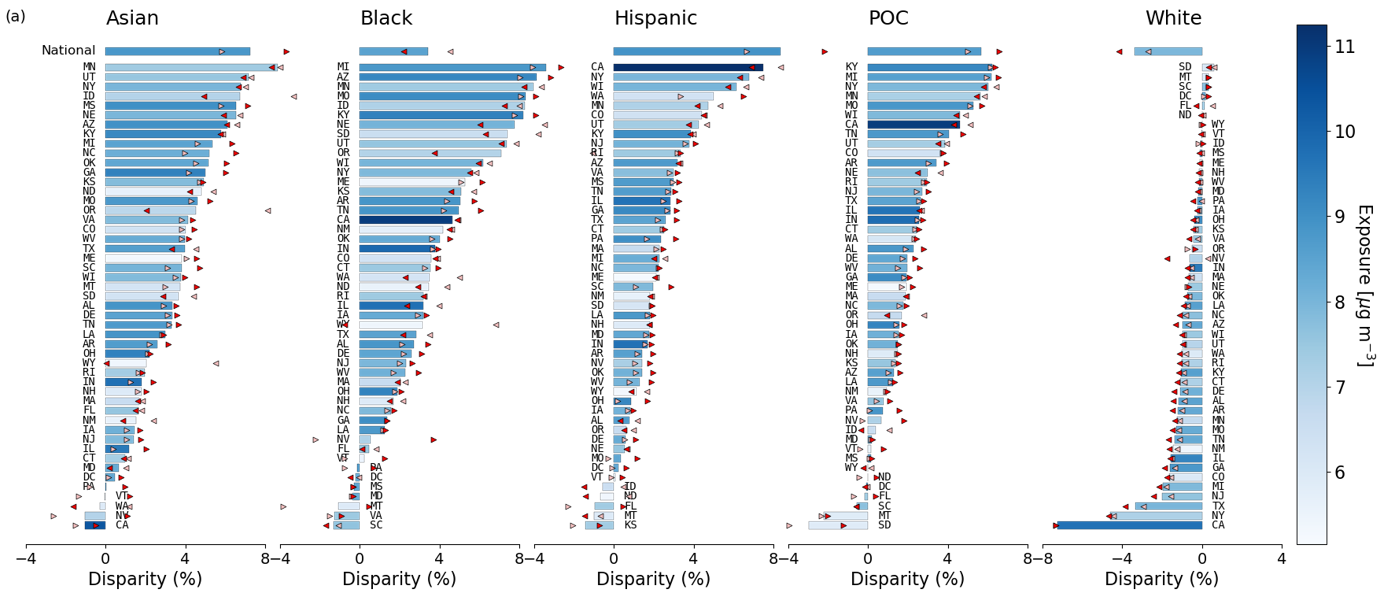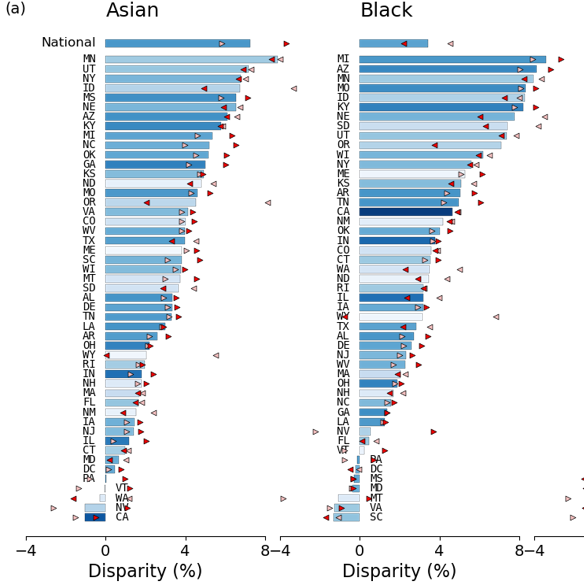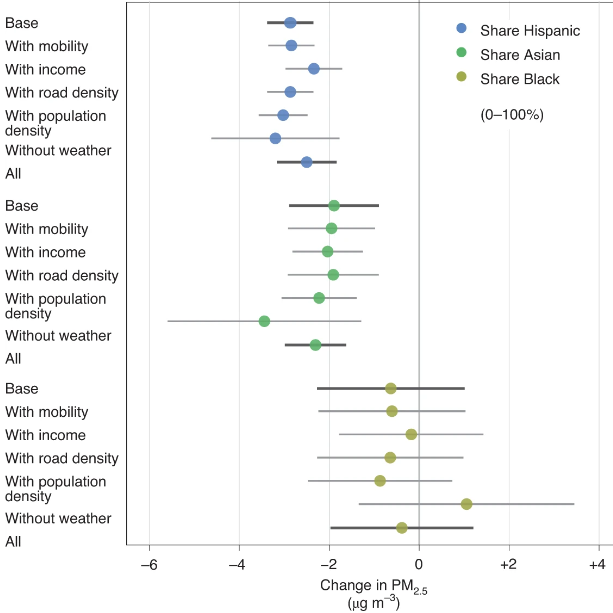Air quality equity
Sources of inequitably distributed air pollution and potential solutions
Air pollution is responsible for about 100,000 premature deaths in the US every year, and millions globally. It has been been linked to myriad negative health impacts. In the US, air pollution is inequitably distributed by race (see figure). Adressing those inequities requires understanding the spatial distribution of pollution sources and people, as well as the transport and transformation of pollutants in the atmosphere.

In one study, we used the COVID19 shutdown in 2020 to show thta anthropogenic pollution in California (CA) leads to the inequitable distribution air pollution. Particulate matter improved more during the shutdown for Asian and Hispanic Californians, meaning that the activities that declined during this time normally disproportionately impact those populations.

We explored whether those inequities could be addressed by cutting pollution through climate policy. The answer is somewhat nuianced - simply reducing pollution does not necessarily reduce inequities. However, targetted implementation of climate policies can lead to improved environmental equity. Specifically, the transportation sector has a higher potential to improve equity through climate policy, which is consistent with results from the COVID study, since transportation emissions were greatly reduced during the shutdown.
There are several questions around air quality equity that I would like to explore further. Reach out if you want to talk more!

